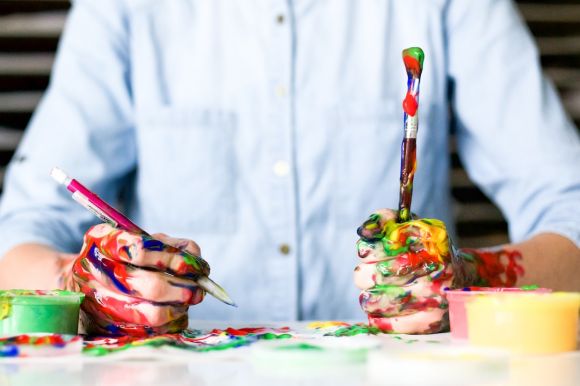Art has always played a significant role in our lives, awakening emotions, stimulating our senses, and inspiring creativity. This influence is not limited to the walls of galleries and museums; it extends to our homes and the way we design our living spaces. Incorporating art into interior design has become a popular trend, as it adds a unique and personal touch to any room. In this article, we will explore the various ways that art influences interior design and why it is essential to consider when creating a harmonious living space.
Creating a Focal Point
One of the primary influences of art in interior design is its ability to create a focal point within a room. A well-placed painting or sculpture can draw the eye and serve as a centerpiece, adding depth and intrigue to the overall design. By selecting art that complements the style and color scheme of the room, you can create a harmonious balance that enhances the space’s aesthetic appeal.
Setting the Mood
Art has the power to evoke emotions and set the mood within a room. Just as a vibrant and energetic painting can bring a sense of excitement to a space, a calming landscape or abstract piece can create a tranquil atmosphere. Choosing art that resonates with the desired ambiance of the room can help establish a specific mood and enhance the overall experience of the space.
Adding Color and Texture
Art provides an excellent opportunity to introduce color and texture into interior design. A carefully selected piece of art can serve as a color palette inspiration, guiding the choice of furniture, accessories, and even wall paint. Additionally, art can introduce texture to a room, whether through a textured painting, a sculptural installation, or a mixed media piece. These elements contribute to the depth and visual interest of the space, creating a dynamic and engaging environment.
Showcasing Personal Style and Interests
Incorporating art into interior design allows individuals to showcase their personal style and interests. Whether it’s a collection of vintage posters, abstract paintings, or photographs from travels around the world, art can tell a story and reflect the unique personality of the homeowner. By curating a collection of art that resonates with their tastes and experiences, individuals can create a space that feels truly authentic and inviting.
Creating Conversation Starters
Art can act as a conversation starter and a reflection of the homeowner’s interests and personality. When guests enter a room adorned with thoughtfully chosen art, it can spark discussions and offer insights into the homeowner’s passions and experiences. Moreover, art can serve as a bridge between people, creating connections and fostering meaningful conversations.
In conclusion, art has a profound influence on interior design, shaping the atmosphere, adding visual interest, and reflecting personal style. By incorporating art into living spaces, individuals can create a unique and expressive environment that stimulates the senses and invites conversation. Whether it’s a bold abstract painting or a delicate sculpture, art has the power to transform a room and create a space that is both visually captivating and deeply personal. So, the next time you embark on an interior design project, consider the influence of art and let it guide your creative vision.
